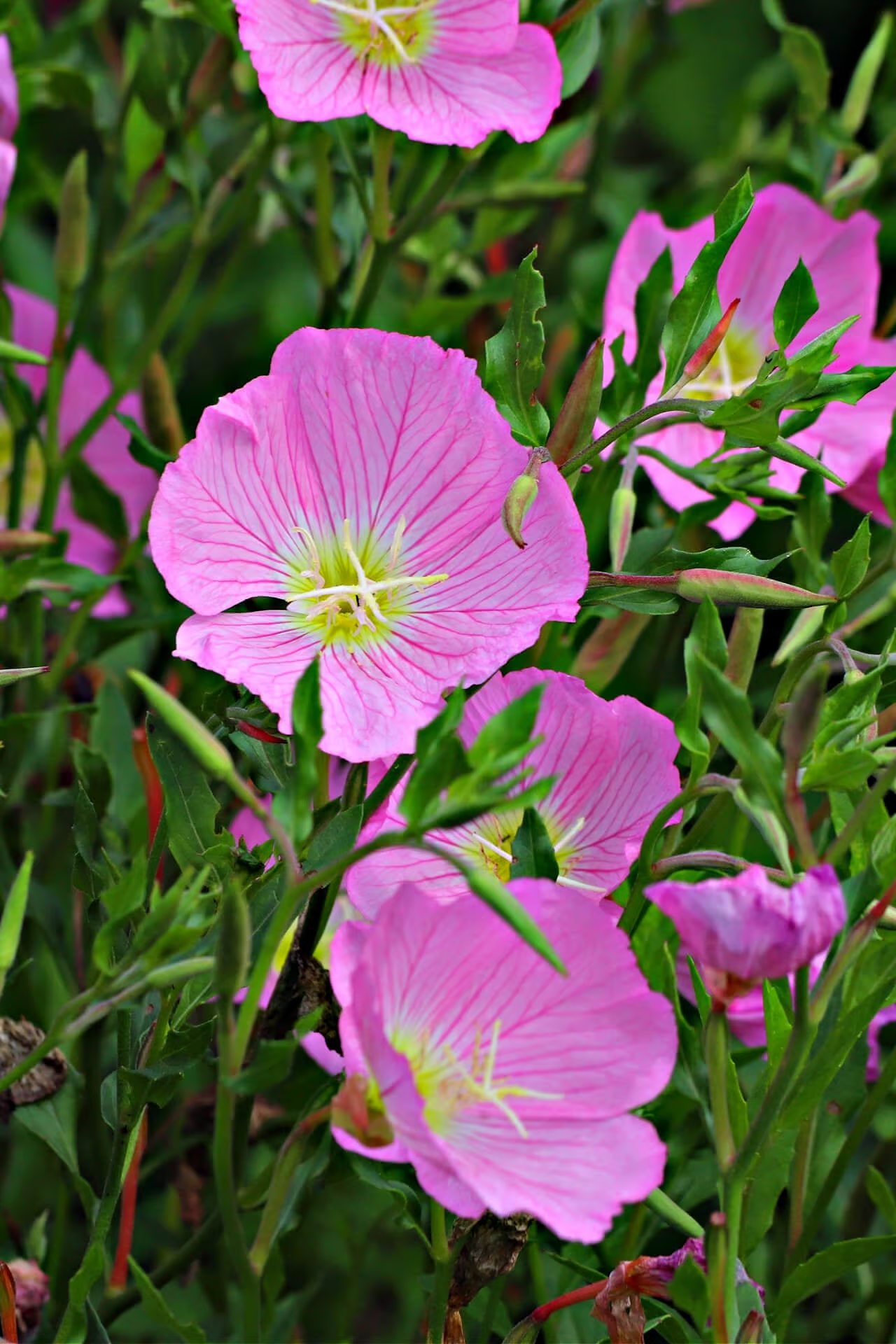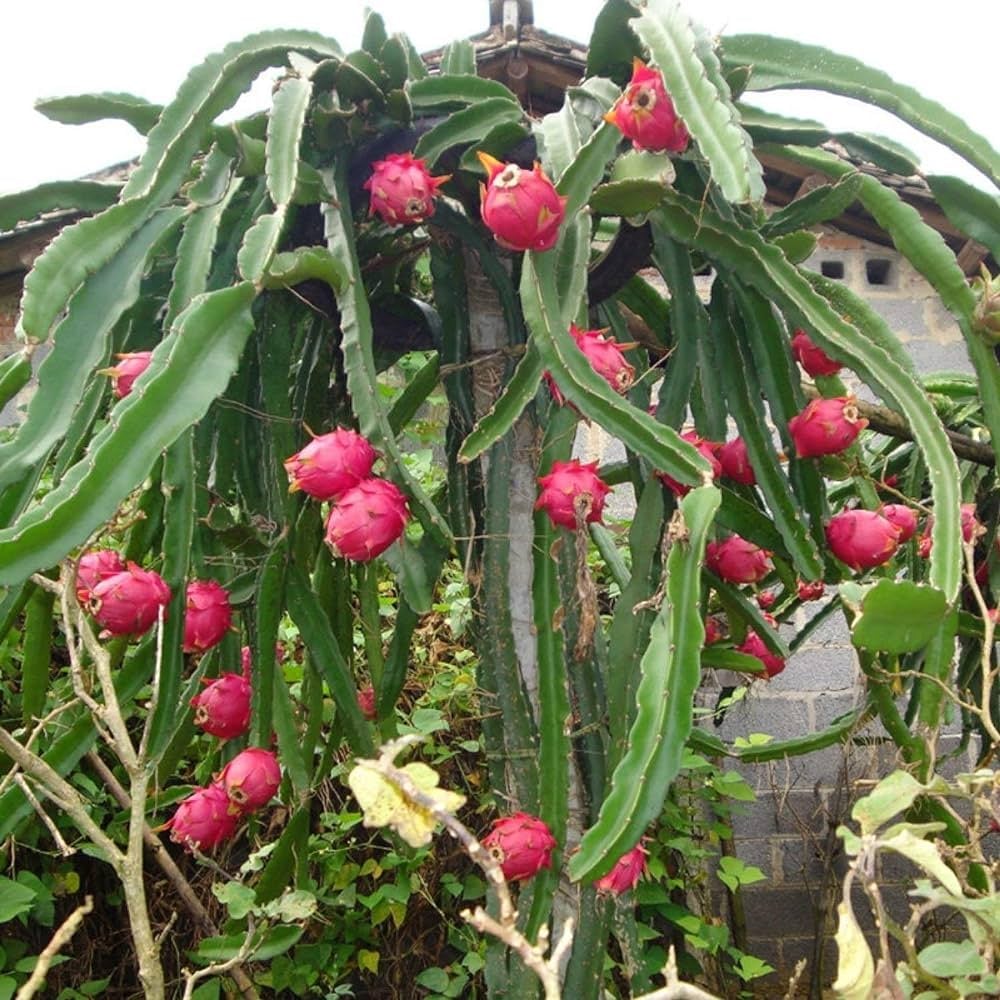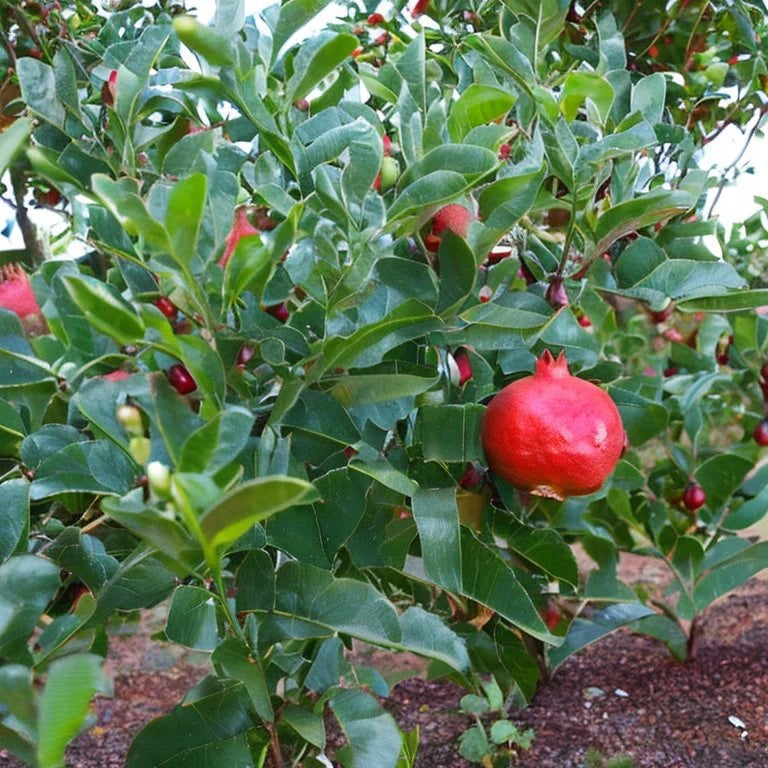




Showy Pink Primrose
Attracts pollinators like bees and butterflies
Thrives in shaded and partial sun areas
Drought-tolerant once established
Thrives in
ZONE 5ZONE 6ZONE 7ZONE 8ZONE 9This plant ships:
Ships Week of May 5thShowy Pink Primrose - Oenothera speciosa
The Showy Pink Primrose is a unique garden perennial treasure. The plant's blooms start opening up and displaying in the afternoon. This makes it a highly sought-after and prized plant that many homeowners want in their flowering beds and gardens.
Showy Pink Primrose Is a Favorite Perennial
also commonly referred to as the evening type, pink ladies' is a perennial flower known for its delicate rosey hues and finely textured petals. If you are looking to add some soft color to your garden, this is an excellent flower to plant.
Details of the Showy Pink Primrose Plant
It adds a soft elegance to outdoor spaces. The middle of the pedals are typically white but gradually turn into a coral rosey towards the edges of the petals. Occasionally, the color can intensify to a dark. From afar, petals' white and rosey colors can look almost purplish. They develop long throats and stamens stretching from the flower's center. The buds nod to give the flower a lazy, practically laidback appeal. The central part of the flower, starting at the stamen, has a contrasting yellow coloration. Still, these colors are never jostling busily for position.
Instead, the pastel profile of the tinges complements each other very well. In a garden, the plant works well against dark green backdrops or as accent pieces to flowers with brighter colors. It typically grows upright and can reach heights of two feet off the soil line. Occasionally, the plant can sprawl out to provide more ground coverage. Each flower produces four solitary petals joined at the plant's axils. They are finely textured with wavy edges, reminiscent of fine paper mache.
The petals are very dainty, keeping with the frilly, playful theme of the understated colors. Don't get the wrong impression, though. The plant is quite hardy, even as the petals look tender. The plant produces a sturdy stem with stout, lance-shaped green leaves. The plant leaves can grow to about 4 inches long. In the autumn, you may notice that some green leaves tan reddish. The flowers themselves can reach about 1.5 to 2 inches in diameter.
Advantages of This Perennial
Aside from their soft elegance, they can be put to advantageous use in your outdoor areas. This flower is sometimes called an evening flower because it blooms at night in most Northern climates. Around dusk, it emits a floral fragrance that is as irresistible to the nose as its beauty is to the eyes.
The plant is famous for landscapers and home gardeners who want to cover unpopulated open areas. It colonizes (spreads) very quickly in most solid conditions so long as it isn't too loamy, sandy, or rocky. So, if you have a bare section of your yard that can use some natural color, this is a great option.
While they prefer moderately moist soil, they can thrive in dry soil as long as it is well-drained. They are also surprisingly drought—and heat-resistant. Most people find that once the plant is firmly established, it is very durable, which makes it an attractive, low-maintenance option.
It Attracts Birds
They produce nectars attracting lilting songbirds to your garden and outdoor areas. And you don't have to worry about deer eating these flowers because it is highly deer-resistant. It's a Great Autumn Flower - It is an excellent solution to maintain upbeat colors well into the fall months.
In most climates, the plant prefers cooler temperatures. This means that they are likely to bloom through October. This is also a great flower to add to your garden if most of your current flowers typically bloom in the summer. This way, you can have vibrant colors all year round.
F.A.Q.s
How Do You Take Care of this plant
They should be planted in dry to moist, well-drained soil in a spot with lots of full sun. During the first growing season, it's best to give them regular water, which you can then taper off once it is established. Deadheading it is not necessary, but you can safely remove old blossoms as they appear.
Is It A Perennial
Yes. Its a native plant originating in the Southern US and spreading to the Midwest and parts of Northern Mexico. Its perennial nature makes it ideal for people with little gardening experience.
Do they Bloom All Summer
In most conditions, the blooms go dormant in the summer as it prefers cooler temperatures. Again, this makes it a good choice for maintaining color in your garden during autumn. However, some gardeners have avoided the plants summer dormancy by simply not watering it too often in the spring.
It is a simple and effective way to add subdued yet attractive color to your garden and outdoor areas. Here at T.N. Nursery, we can provide quality plants with robust root systems that are ready to plant immediately.
It Has Stunning Blooms
The delicate, charming rose blossoms are adorned with green foliage that accents the plant nicely. The blooms grow in clusters with five petals and can range from a pal roseto to deeper shades of rose, depending on the soil's pH.
It Is A Desirable Plant
They offer a delicate ruffled edge on the blooms and reach an average height of nearly 20 inches at maturity, making it a highly desirable plant for landscaping. It accents borders, containers, or rock gardens very well and has a mild and sweet fragrance.
They Last From Spring Till Fall
Being a Spring and Fall bloomer also makes this a beautiful plant for those who enjoy blooms in both seasons and those who want a plant with a long blooming period.
How do I care for one
They require indirect sunlight and free-draining but moisture-retentive soil. It needs to be watered often, however it should not be waterlogged so as to encourage its growth. Add a layer of much to help retain moisture and protect the roots during winter.
When do they bloom
It is a spring flowering plant, commonly beginning in March or April. The flowers last for several weeks and their bright colors can help to revitalize your garden after winter.
Can they be grown in containers
They are excellent for planting in pots and containers, thereby suitable for the patio, balcony, or even a front porch garden. Just make sure this pot has a drain hole and should be provided with proper light and water to grow properly.
Are they easy to grow
Showy Pink primrose is not demanding and may be grown by even the most inexperienced gardener. Given proper attention, they will grow well and bloom year after year; they, therefore, complement any garden landscape.
This Is How Your Plants Will Look upon Delivery

Bloom Season
Summer
Bloom/Foliage Color
Pink
Height at Maturity
Under 12"
Care
Showy Pink Primrose thrives in well-drained soil with regular watering. Mulch to maintain dampness and keep roots cool. Deadhead spent blooms to encourage new growth and prevent self-seeding. In spring, fertilize with a proportional plant food.
Plant Reproduction
Showy Pink Primrose spreads by rhizomes and self-seeding.
Shipping date depends on the date displayed and chosen when you order from the product's page.
We only accept returns on plants verified dead. If you think your plants have died, we offer a 1 year warranty, please use this File a Claim Link to verify dead plants and start with return warranty process.







Vibrant Pink Flowers:
The Showy Pink Primrose boasts striking pink blooms that add vivid color to any garden space.
Shade Tolerant:
Perfect for brightening up shaded areas where other plants might struggle to thrive.
Versatile Placement:
Works well in various garden settings, including containers, borders, and as ground cover.
Easy to Grow:
Requires minimal maintenance, making it an ideal choice for busy gardeners looking for a low-care option.
Caring Tips
How do I care for my Showy Pink Primrose?
Each box contains detailed care instructions and information about your product. But here's the basics.
Care Tips
Showy Pink Primrose thrives in well-drained soil with regular watering. Mulch to maintain dampness and keep roots cool. Deadhead spent blooms to encourage new growth and prevent self-seeding. In spring, fertilize with a proportional plant food.
Light Requirements
Showy Pink Primrose thrives in partial to full shade, ideal for shaded garden areas. It prefers excellent, moist conditions and can handle morning sun but generally does best with protection from the harsh midday and afternoon sunlight.
Hardy Planting Zones
5 • 6 • 7 • 8 • 9
Header
Use this content to share information about your store and products.
Frequently Asked Questions
How often should I water my plants?
How do I know if my plant is getting too much or too little sunlight?
What should I do to prepare my plants for winter?
What are the signs that my plant needs fertilizing?
How can I prevent pests from damaging my plants?
How do I choose the right plant for my climate zone?






